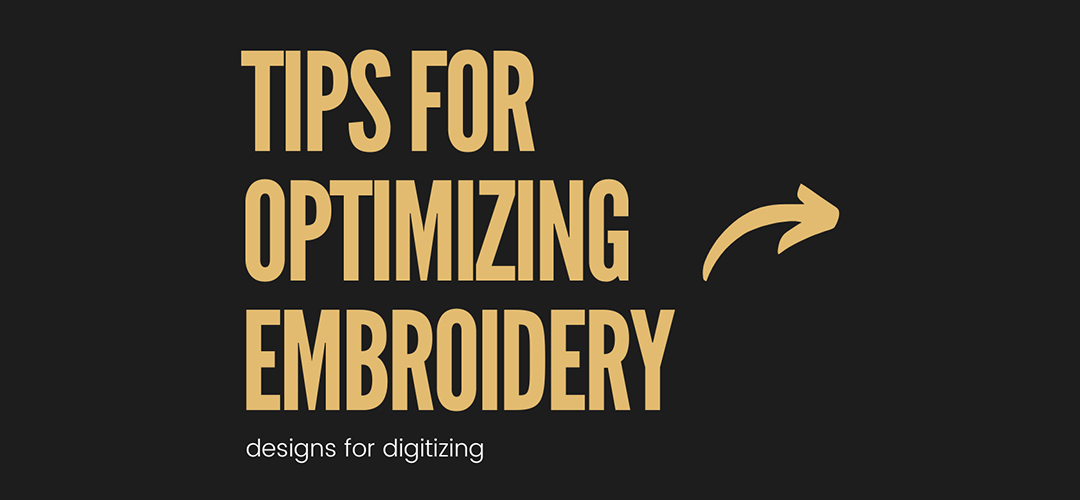Posted At: Apr 28, 2023 - 6,733 Views

Embroidery digitizing is a process of converting artwork into digital embroidery designs that can be stitched onto fabric using an embroidery machine. Optimizing embroidery designs for digitizing is essential for achieving high-quality embroidery results. In this article, we will discuss some tips for optimizing embroidery designs for digitizing that will help you create beautiful and professional-looking embroidery designs.
Use high-quality artwork
The first and most important tip for optimizing embroidery designs for digitizing is to use high-quality artwork. High-quality artwork will ensure that the embroidery design is clear, detailed, and easy to digitize. Low-quality artwork can result in poor-quality embroidery designs with blurry details and rough edges.
Simplify complex designs
Complex designs can be difficult to digitize and may result in poor embroidery quality. To optimize embroidery designs for digitizing, it's important to simplify complex designs by reducing the number of colors and simplifying details. This will make the design easier to digitize and result in higher quality embroidery.
Choose appropriate thread colors
Choosing appropriate thread colors is essential for optimizing embroidery designs for digitizing. The thread colors should match the colors in the original artwork and complement the fabric color. Choosing the right thread colors will enhance the overall look of the embroidery design.
Use appropriate stitch types
Using appropriate stitch types is also important for optimizing embroidery designs for digitizing. The stitch types should be chosen based on the type of design and the fabric being used. For example, satin stitches are great for text and small details, while fill stitches are great for larger areas of color.
Check the stitch density
Checking the stitch density is crucial for optimizing embroidery designs for digitizing. The stitch density should be appropriate for the fabric being used and the size of the design. Too high or too low stitch density can result in poor-quality embroidery, so it's important to get it right.
Use appropriate underlay stitches
Using appropriate underlay stitches is important for optimizing embroidery designs for digitizing. Underlay stitches provide a stable base for the design and help prevent fabric puckering. The type and density of underlay stitches should be chosen based on the fabric being used and the design.
Test the design
Testing the design before stitching it onto the final fabric is important for optimizing embroidery by design for digitizing. This will help identify any issues with the design, such as stitch breaks, puckering, or uneven stitching. Testing the design on a similar fabric will also help determine the appropriate stitch density and underlay stitches.
In conclusion, optimizing embroidery designs for digitizing is essential for achieving high-quality embroidery results. By following these tips, you can create beautiful and professional-looking embroidery designs that will impress your clients and customers. Remember to use high-quality artwork, simplify complex designs, choose appropriate thread colors and stitch types, check the stitch density, use appropriate underlay stitches, and test the design before stitching it onto the final fabric.
Need Customized Design? Get Quote Now
